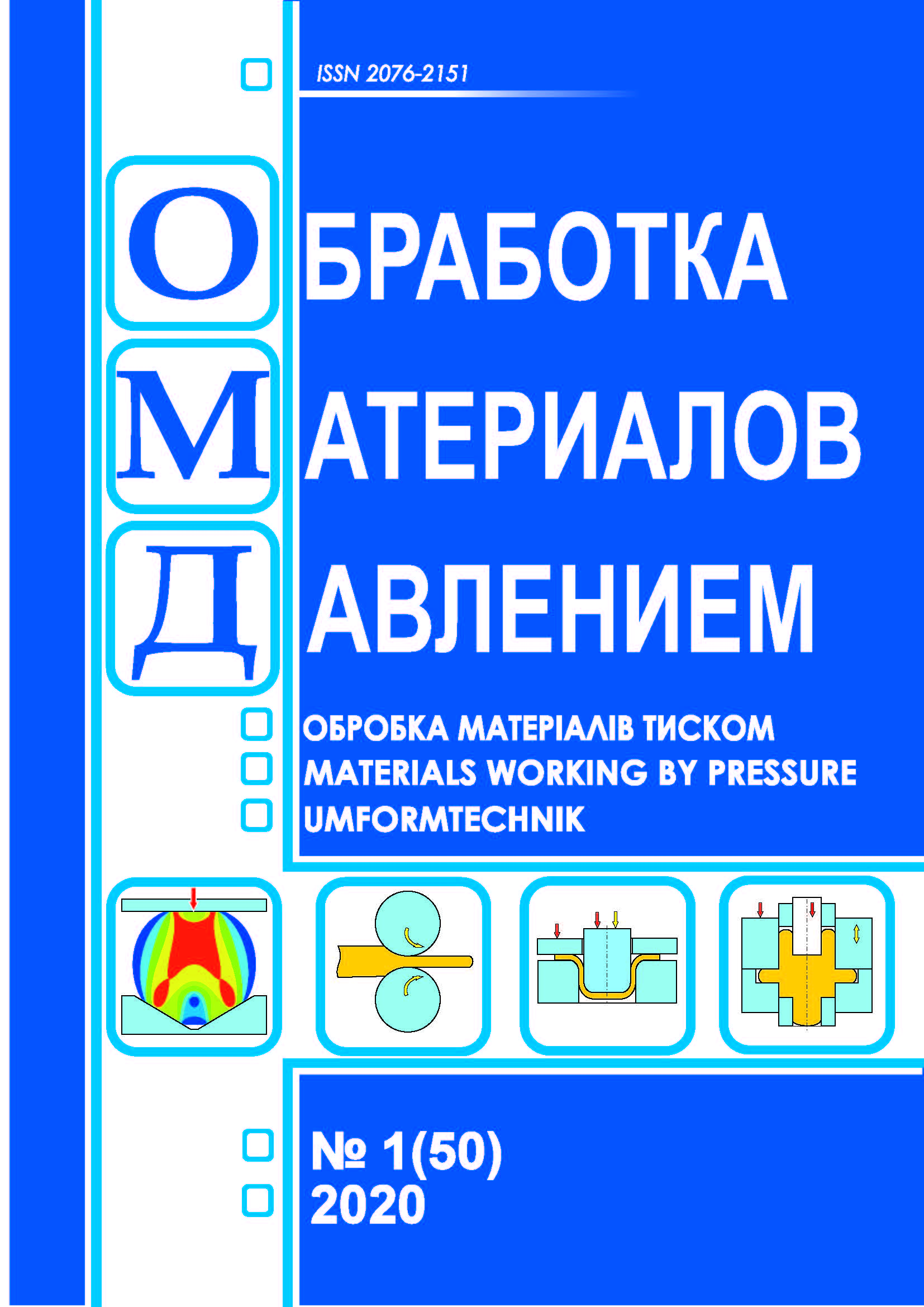The choice of boundary conditions when simulating the process of shape rolling
DOI:
https://doi.org/10.37142/2076-2151/2020-1(50)77Keywords:
modeling, shape rolling, oval caliber, contact conditions, law of friction, lead bars, inverse analysis, boundary conditionsAbstract
Shtoda M. M. The choice of boundary conditions when simulating the process of shape rolling. Material working by pressure. 2020. № 1 (50). Р. 77-82.
The purpose of this work is to determine an adequate friction law describing the contact conditions in the deformation zone when simulating in the QForm 9.0.7 software product the process of rolling lead bars in calibers of asimple form. Since when formulation of the problems deformation processes, the greatest difficulties are caused by the conditions at the contact of the processed metal with the tool. For obtain practical data to the basis for determining adequate contact conditions during modeling, lead circular cross-section bars (C1 lead) of with an average diameter of 6.62 mm were rolled in an oval caliber in laboratory. The rolling was carried out on a mill 210 with a roll rotation frequency of 100 rpm. For obtain different values of the coefficient friction at the contact strip with the rolls, the bars were either degreased or covered with soap or chalk before rolling. In accordance with the average values obtained in the real rolling process under laboratory conditions, calculations were carried out in the QForm 9.0.7 software product under various contact conditions. The article shows the necessity and effectiveness of inverse analysis to determine the boundary conditions in the modeling of the rolling processes. It is shown that all the laws of friction, which proposed in the QForm software product adequately, describe the nature of the influence of the friction coefficient on the distribution of metal flow in the longitudinal and transverse directions. The highest calculation accuracy was obtained using the Coulomb friction law, which is recommended to be used when modeling rolling processes in the QForm software product. Siebel's and Levanov's laws of friction cannot be used to simulate the rolling process in calibers.

